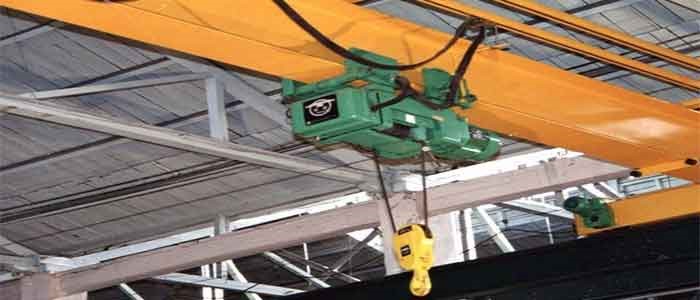Electric hoists are divided into wire rope electric hoists and chain electric hoists. When repairing after a fault occurs, listen and watch more. You can use or determine the location of the sound according to the characteristics of the fault sound to find and repair the fault.
- The abnormal noise of the electric hoist occurs in the control circuit. Generally, the contactor is faulty. The faulty contactor should be repaired. If it cannot be repaired, it must be replaced. After treatment, the noise will be eliminated by itself.
- If the electric hoist motor emits abnormal noise, it should be stopped immediately to check whether the motor is single-phase running, or the bearing is damaged, the shaft of the coupling is not correct, and the “sweeping” faults, all of which will cause the motor to have abnormal noises and different faults. The sound position and height are different. When single-phase is running, the entire motor emits a regular “hum” sound; when the bearing is damaged, it will emit a “hum” accompanied by “cock-cock” near the bearing. When the shaft of the coupling is not correct, or the motor is slightly sweeping the bore, the entire motor emits a very high “hum” sound, accompanied by sharp and piercing sounds from time to time.
In short, according to the difference in noise, the fault should be found, and the maintenance should be carried out one by one to restore the normal performance of the motor. When the motor failure has not been dealt with, the use of hoist is prohibited. - The abnormal noise of the electric hoist is emitted from the reducer, and the reducer is faulty. At this time, the machine should be stopped for inspection. First, determine whether the reducer gearbox or bearing has been lubricated before use, and whether the lubricating oil is regularly replaced during use, such as Without lubrication as required, the reducer will not only produce excessive “buzzing” noise, but also excessive wear or damage to gears and bearings.


No Responses